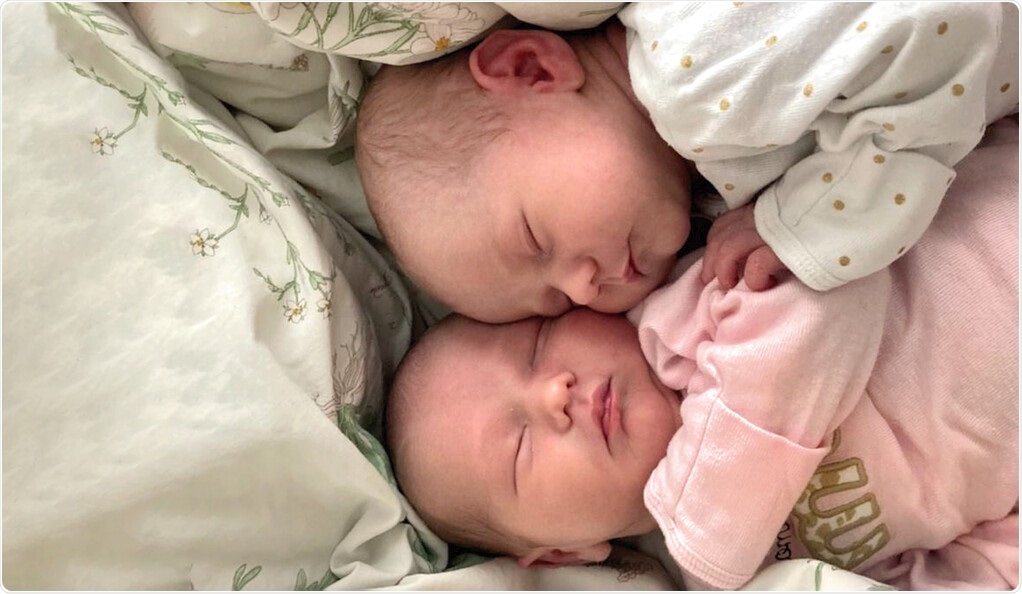The genetics of the placenta and fetus—not the mother’s intrauterine environment—regulate developmental abnormalities, including those that contribute to autism and pregnancy loss, according to Yale researchers.

Twin babies sleeping. Image Credit: Yale University.
The results of the study were published in the online edition of the journal Placenta on April 28th, 2021.
According to the Centers for Disease Control and Prevention (CDC), one out of every 33 children in the United States is born with a birth defect per year. This equates to one baby being born every 4.5 minutes, or 120,000 a year.
Mothers often feel that they are responsible for these defects. But it’s not their fault. This new research points to the genetics of these children as being the most important cause.”
Dr Harvey Kliman, Study Senior Author and Research Scientist, Department of Obstetrics, Gynecology & Reproductive Services, Yale School of Medicine
Kliman’s team analyzed placental data from about 50 sets of non-identical and identical twins for the research. They discovered that identical twins had a similar frequency of abnormal cell growths known as trophoblast inclusions (TIs), which are markers for various developmental anomalies, whereas non-identical twins had a significantly different TI count.
Non-identical twins share half of their DNA sequence while identical twins share the same DNA sequence. The team discovered that identical twins mostly had the same number of TIs or were within one with the same TI count. Non-identical twins had TI counts that differed by four to five on average.
This work suggests that developmental abnormalities are much more likely to be due to the genetics of the child, and not the mother’s fault.”
Dr Harvey Kliman, Study Senior Author and Research Scientist, Department of Obstetrics, Gynecology & Reproductive Services, Yale School of Medicine
The research was inspired by lead author Julia Katz, a former Yale undergraduate who is now a medical student at Hofstra University. Katz and her brother, Jesse, are non-identical twins who were born underweight and with many congenital defects.
I had a lot of guilt, growing up, about why my twin had certain conditions that I didn’t. I think mothers also tend to blame themselves.”
Julia Katz, Study Lead Author and Medical Student, Hofstra University
After a Yale lecture, Katz contacted Kliman and inquired as to what makes babies be born undersized. The topic moved on to a discussion on developmental abnormalities and Katz’s wish to learn more about her and her twin’s genetics, like looking at her own placental slides from birth.
Kliman, Katz, and co-author Parker Holzer, a graduate student in the Yale Department of Statistics and Data Science, were all inspired to conduct the new research.
“Julia’s need to resolve this burden is what propelled our study. Hopefully, this finding will help many other people, as well,” said Kliman.
“This experience has shown me that if you have a question, ask it. And if you don’t get an answer, try to answer it yourself,” concluded Katz.
Source:
Journal reference:
Katz, J., et al. (2021) Genetics, not the uterine environment, drive the formation of trophoblast inclusions: Insights from a twin study. Placenta. doi.org/10.1016/j.placenta.2021.04.010.